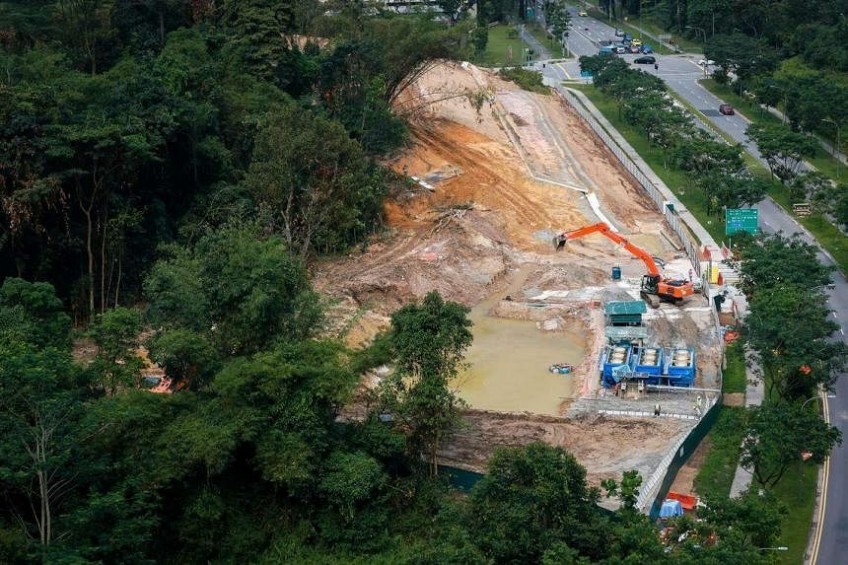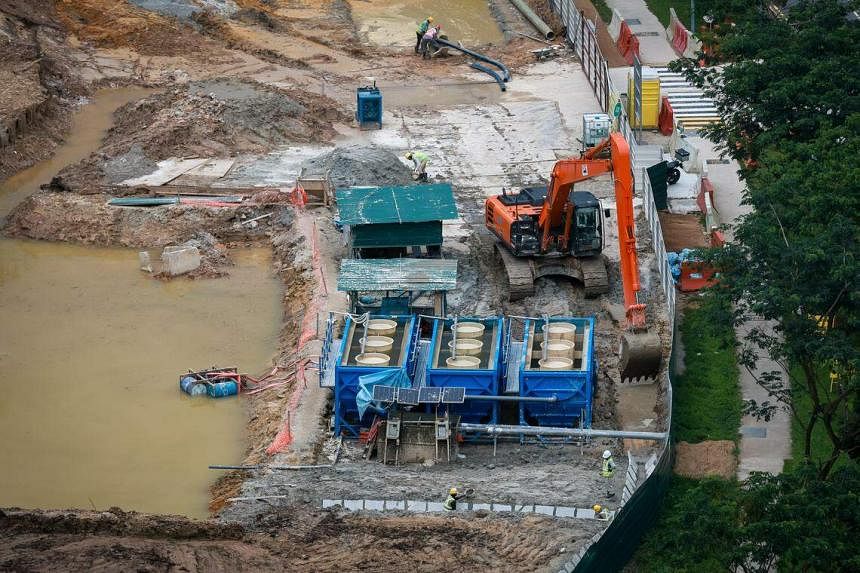Stagnant water spotted: PUB orders halt to work at Bukit Batok BTO site after contractor found to have breached rules


SINGAPORE – National water agency PUB has ordered a stop to clearance work at a BTO project in Bukit Batok Hillside Park after a contractor was found to have flouted rules aimed at curbing environmental impact.
The contractor was to clear part of the forested site before the next stage of the West Glades Build-To-Order (BTO) project could start.
Contractors are required to plan and implement adequate steps at construction sites to contain and treat water containing silt, mud, rocks and sand before it is discharged into drains.
This ensures that waterways stay clean and unclogged to allow rainwater to flow during heavy rainfall, said PUB on March 30 in response to queries.
On March 26, photos taken at the HDB construction site for the BTO project were posted on a Facebook page. They show, among other things, stagnant water collecting at the edges of the site.
The photos sparked concern among conservationists about the effectiveness of the environmental management and monitoring plan (EMMP) put in place to lessen the possible harmful impact of construction works on the environment.
In fact, long before work started, consultations were held with nature experts and a study was published in 2020 on ways to limit the environmental impact on the 17ha secondary forest – the size of about 42 football fields – part of which forms the Bukit Batok Hillside Park.
In its statement on March 30, PUB said when it inspected the site on March 23, it had found improper cut-off drains and silt fences – barriers to protect water quality in nearby streams and rivers.
Such structures are important as they remove silt and sediment from the water before any discharge can leave the site, said a PUB spokesman.
She said: “We directed the contractor to stop site clearance work and construct proper cut-off drains with silt fences before they are allowed to resume site clearance work.” She added that PUB will be taking enforcement action against the contractor.
When asked, the Housing Board on Saturday said it was aware that PUB will be taking enforcement action against its contractor. It added that so far, no silty water has been discharged from the site.
An HDB spokesman said the board will work closely with its EMMP consultant and contractor to install concrete-lined drains and ensure that steps are quickly put in place to make sure exposed earth does not lead to other problems, given the recent rain and hilly terrain in the area.
[embed]https://www.facebook.com/bukitbatokhillsidepark[/embed]
She said a specialist consultant is monitoring land preparation works to ensure compliance with EMMP guidelines. Two officers will be on site to supervise the contractor’s works. She added that photos on social media had shown works in progress to facilitate the construction of earth control measures.
She said: “The frequent rain in the past one to two weeks has also hampered progress of work on the earth control measure drains. In the interim, the contractor had put in place measures to prevent silty water from spilling out of the site, especially in the event of heavy rain.”

On March 28, HDB published on its website the EMMP for residential parcels near the planned Bukit Batok Hillside Nature Park to help guide construction work.
Conservationists said the breaches show how difficult it is to implement steps aimed at cushioning the impact of building work.
Nature Society (Singapore) member Tony O’Dempsey, whose Facebook post raised the alarm about the lapses at the Bukit Batok site, said poor soil erosion controls can cause water pollution due to silt, and this usually happens in hilly construction sites.
[embed]#[/embed]
This can impact fauna found in streams, for instance, by smothering gills of fish, he added.
Said Mr O’Dempsey: “Streams can recover over time if the source of siltation can be brought under control early enough and if there are adjoining unaffected streams from which unaffected fish may restock the affected stream.”
Mr Muhammad Nasry Abdul Nasir, executive director of volunteer group Singapore Youth Voices for Biodiversity, said the years-long process of conducting environmental impact assessments and consultations is pointless if recommended mitigation measures are not adhered to.
He said: “What that means for biodiversity is fairly straightforward: It’s almost as if the assessment was never done in the first place.
“In this case, the infractions can affect humans as well, as not covering bare earth leads to both stagnant bodies of water where mosquitoes can breed and contributes to even more erosion of the hilly area, which can destabilise the soil and lead to mudslides.”
Bukit Batok resident and writer Jimmy Tan called the breaches disappointing. In 2020, he launched a petition to conserve Bukit Batok Hillside Park and managed to get 15,000 signatures.
Mr Tan, 49, said: “It is a learning experience for everyone, including contractors, government agencies, amateur citizen scientists and nature enthusiasts like myself, and there is no condemnation or judgment to anyone or any company for the mistakes and oversight.”
The public can report lapses in earth control measures by calling the 24-hour PUB call centre on 1800-CALL-PUB (1800-2255-782), with details of the location, and photos and videos to help PUB investigations.
ALSO READ: Close call for worker who passes Clementi landslide area when cycling home
This article was first published in The Straits Times. Permission required for reproduction.